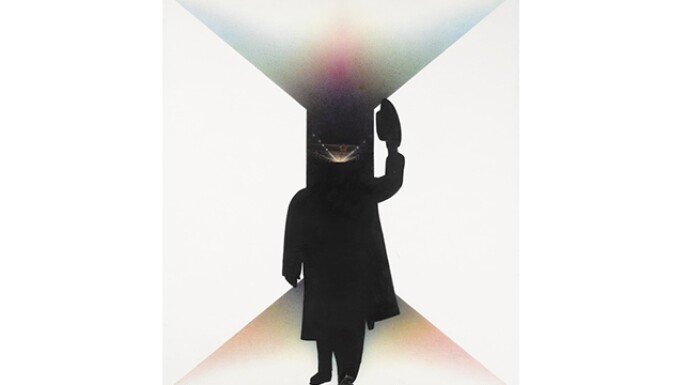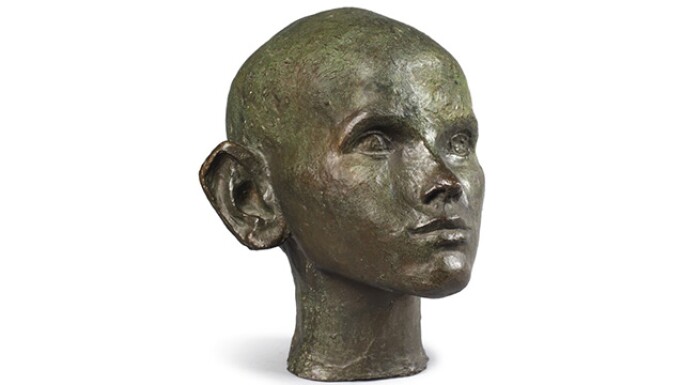An Unexpected Home for Soviet Era Art
The Zimmerli Art Museum of Rutgers University recently received the largest donation in the museum’s history. The gift included a trove of 17,300 works, with an estimated value over $30 million.
This prized collection was bequeathed to the Zimmerli Art Museum by Nancy Dodge, widow of Norton Dodge, an economist, art collector, and academic who was well known for groundbreaking research on the Soviet economic system. The Dodges' gift is the second of such bequests; the Zimmerli Art Museum accepted 4,000 similar works from the Dodge family in 1991. Fascinatingly, the couple focused their private collection to a single time period and style in art history: Soviet Non-Conformist art.
The Dodge collection of Soviet Non-Conformist art is as focused and rare as the work it features. The collection includes work of a diverse cross section of media - from painting to video - by more than 1,000 artists who changed the course of Russian modernism in the late 20th century, until 1991, when the Soviet Union met its downfall.
The Non-Conformist movement (1950-1991) is marked by innovation, individuality, and silos of deep originality; after all, many of its artists were working in solitude. The Non-Conformists were, by and large, artists that had been ostracized by government officials and banned from government-sanctioned professional circles. Artists who dared create work outside of these official circles - especially in the 1960s - took a huge risk; many were gambling with their livelihoods, if not lives. Yet the artists continued to subvert and protest the Soviet Union with their art form, receiving little critical acclaim until decades later.
Thanks to focused and forward-looking collectors such as the Dodges, the Zimmerli Art Museum in New Jersey is now the world’s premiere location to see Soviet Non-Conformist art with, as of 2017, the largest collection on public view.
Here, we take a closer look at four artists whose work was ahead of its time and stood the test of time. The Non-Conformist artists of the Soviet Union are returning to the limelight once again even if, as Nancy Dodge once stated, their art form “had been consigned to obscurity.”
Four Artists of the Soviet Non-Conformists
Oleg Vassiliev

Oleg Vassiliev, Illumination, 1989, oil on canvas.
The artist Oleg Vassiliev is largely considered to be one of the most influential artists of the Soviet Non-Conformist group, despite his attempts to disregard politics. Vassiliev worked publicly as an illustrator, while secretly creating original work in private as a Nonconformist. The artist only showed his art in one exhibition during his time in the Soviet Union, in a jazz café, Blue Bird. After his first exhibition it was deemed unsafe to publicly exhibit at the Blue Bird.
Vassiliev continued to take part in unofficial art exhibitions outside the Soviet Union, including a show in Venice entitled “The Biennale of Dissident Culture.” In time, his international exhibitions paid off, attracting the interest of a global client base. For example, his surrealist yet photo-realist artwork, such as the painting Illumination, caught the eye of an American collector. Vassiliev proceeded to spend the rest of his years in the United States, establishing a name for himself amongst the international avant-garde.
Anatoly Brusilovsky

Anatoly Brusilovsky, Two Ideas, 1984, assemblage.
An assemblage artist, Brusilovsky was born in Odessa in 1932. Brusilovsky was an art school graduate and much like the artist Vassiliev, he went on to work as an illustrator. He first exhibited as a part of the VI International Festival of Young People and Students. However, his public career was fraught with conflict as his early work failed to pass governmental censorship, necessitating this break from society circles and entrance into the Non-Conformist movement.
In the artwork Two Ideas, we get a sense of the dichotomy of his situation. Here, Brusilovsky is illustrating the two worlds that existed in Russia at the time. Born to a Jewish family in Odessa, Brusilovsky was a part of the largest Jewish community in the world. However, the Jewish community was fractured from greater society, much as Brusilovsky was fractured from formal artistic patronage, a disadvantage for Non-Conformist, and especially Jewish Non-Conformist artists at the time.
Ernst Neizvestny

Ernst Neizvestny, Male Portrait, 1980s, bronze.
Born in 1925, the sculptor Neizvestny served in the Soviet Armed Forces as an air force commanding officer from 1942 to 1945. In 1945, he was severely injured and declared dead. The artist was posthumously awarded the Order of the Red Star for his heroic death. Miraculously, the artist survived a clinical death and eventually escaped the political climate of the Soviet Union after being called out by governmental officials as a “degenerate” artist. He immigrated to the United States where he proceeded to create a sculpture park on Shelter Island in New York, featuring iconic works that recall the formalism of Male Portrait.
Lev Meshberg

Lev Meshberg, Nude, 1989, oil on canvas.
The artist Lev Meshberg was raised in Odessa and began to paint and draw as a child. He achieved success in the Soviet Union; in 1967, he was even awarded the honor of being named as one of the six best painters in Russia. Notwithstanding his success, Meshberg continued to privately create autobiographical images that bucked official trends and was slowly threatened for provoking the standards of government sanctioned art. Ultimately, he left the Soviet Union with his wife for the United States in 1973 to escape the tile of “unofficial” artist. Meshberg is best known for his figurative, intimate works in oil such as this late work, entitled Nude.